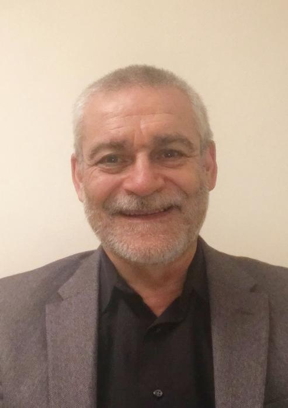Home > Press > Aston University researcher receives £1 million grant to revolutionize miniature optical devices
 |
| Professor Misha Sumetsky
CREDIT Professor Misha Sumetsky |
Abstract:
Miniature optical devices to be developed for use across manufacturing, IT and agriculture
Grant has been given by the Engineering and Physical Sciences Research Council
Devices so small they are measured in picometres a picometre is one trillionth of a metre.
Aston University researcher receives £1 million grant to revolutionize miniature optical devices
Birmingham, UK | Posted on May 17th, 2024
An Aston University researcher has received more than £1 million to deliver optical devices that are so small they sit on the surface of an optical fibre which can be used in manufacturing, IT and agriculture.
The £1,167,290 grant has been given by the Engineering and Physical Sciences Research Council (EPSRC) for the Picometer Surface Nanoscale Axial Photonics (PicoSNAP) project.
The award will be used to develop Surface Nanoscale Axial Photonics (SNAP) technology which enables the fabrication of miniature photonic devices.
Traditionally, the precision of microscopic devices has been constrained by the size of atoms, with fabrication technologies plateauing at several nanometres a nanometre being one billionth of a metre.
However, PicoSNAP technology, which was pioneered by Professor Misha Sumetsky of Aston Institute of Photonic Technologies (AIPT), has enabled devices to be scaled down even further so they can be measured in picometres a picometre is one trillionth of a metre.
The spread of light in SNAP devices differs to regular optical fibres, because light spirals along the perimeter of the fibre and slowly moves along its length, instead of travelling through the core
At the moment SNAP devices are not suitable to go to market, so the project will explore making them ready for practical applications across industries ranging from information technology to precision manufacturing and sensing.
Professor Sumetsky is aiming to develop a reliable manufacturing process to enable production of the devices that is both ultra-accurate and easy to reproduce. If successful, the project will not only bring in a new revolutionary technology but also deliver miniature optical devices with performance not previously possible to achieve, and ready for practical applications.
He said: The lack of reliable, scalable manufacturing processes with picometre precision remains a major obstacle, and SNAP technology has the potential to address this need with its exceptional precision and performance.
The goal of this project is the development of the process, which requires insight into the depth of associated physical phenomena, as well as the design and fabrication of new microdevices critical for the future communication, optical signal processing, microwave and sensing technologies, for applications ranging from food industry to fundamental science.
“We envision a high demand for the miniature optical devices we plan to design and fabricate in this project.
“This grant underscores how Aston University’s strategy is driving impactful research that addresses real-world challenges.”
The project will start in September 2024 and is expected to end in August 2028.
The announcement coincides with UNESCO Day of Light which marks the role light plays in science, culture and art, education and sustainable development. It is held on 16 May every year, the anniversary of the first successful operation of a laser.
####
For more information, please click here
Contacts:
Nicola Jones
Aston University
Copyright © Aston University
If you have a comment, please Contact us.
Issuers of news releases, not 7th Wave, Inc. or Nanotechnology Now, are solely responsible for the accuracy of the content.
News and information
![]()
Gene therapy relieves back pain, repairs damaged disc in mice: Study suggests nanocarriers loaded with DNA could replace opioids May 17th, 2024
![]()
Oscillating paramagnetic Meissner effect and Berezinskii-Kosterlitz-Thouless transition in cuprate superconductor May 17th, 2024
Govt.-Legislation/Regulation/Funding/Policy
![]()
NRL charters Navys quantum inertial navigation path to reduce drift April 5th, 2024
![]()
Discovery points path to flash-like memory for storing qubits: Rice find could hasten development of nonvolatile quantum memory April 5th, 2024
![]()
Chemical reactions can scramble quantum information as well as black holes April 5th, 2024
Possible Futures
![]()
Advances in priming B cell immunity against HIV pave the way to future HIV vaccines, shows quartet of new studies May 17th, 2024
![]()
Gene therapy relieves back pain, repairs damaged disc in mice: Study suggests nanocarriers loaded with DNA could replace opioids May 17th, 2024
![]()
Oscillating paramagnetic Meissner effect and Berezinskii-Kosterlitz-Thouless transition in cuprate superconductor May 17th, 2024
Optical computing/Photonic computing
![]()
With VECSELs towards the quantum internet Fraunhofer: IAF achieves record output power with VECSEL for quantum frequency converters April 5th, 2024
![]()
Chemical reactions can scramble quantum information as well as black holes April 5th, 2024
![]()
Optically trapped quantum droplets of light can bind together to form macroscopic complexes March 8th, 2024
![]()
NRL discovers two-dimensional waveguides February 16th, 2024
Announcements
![]()
Diamond glitter: A play of colors with artificial DNA crystals May 17th, 2024
![]()
Finding quantum order in chaos May 17th, 2024
![]()
Oscillating paramagnetic Meissner effect and Berezinskii-Kosterlitz-Thouless transition in cuprate superconductor May 17th, 2024
Grants/Sponsored Research/Awards/Scholarships/Gifts/Contests/Honors/Records
![]()
Discovery points path to flash-like memory for storing qubits: Rice find could hasten development of nonvolatile quantum memory April 5th, 2024
![]()
Chemical reactions can scramble quantum information as well as black holes April 5th, 2024
![]()
‘Sudden death’ of quantum fluctuations defies current theories of superconductivity: Study challenges the conventional wisdom of superconducting quantum transitions January 12th, 2024
Photonics/Optics/Lasers
![]()
With VECSELs towards the quantum internet Fraunhofer: IAF achieves record output power with VECSEL for quantum frequency converters April 5th, 2024
![]()
Nanoscale CL thermometry with lanthanide-doped heavy-metal oxide in TEM March 8th, 2024
![]()
Optically trapped quantum droplets of light can bind together to form macroscopic complexes March 8th, 2024
![]()
NRL discovers two-dimensional waveguides February 16th, 2024










